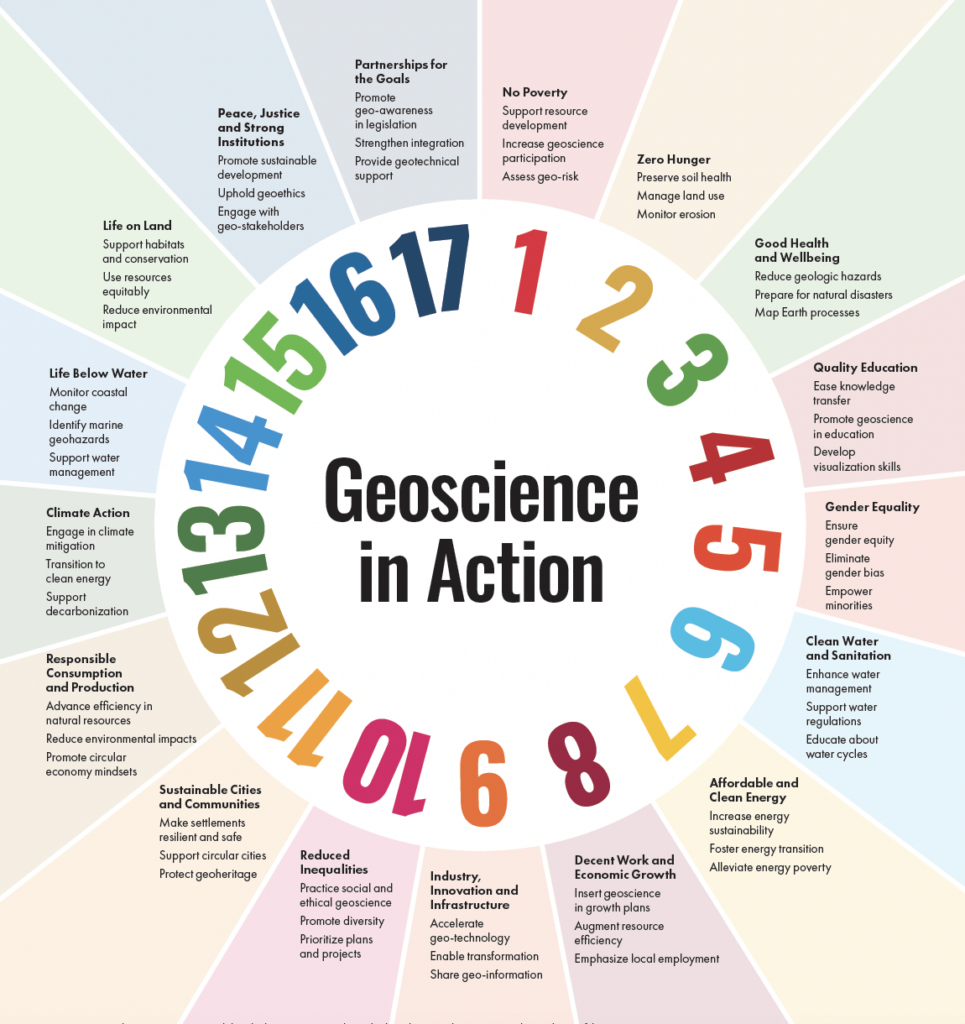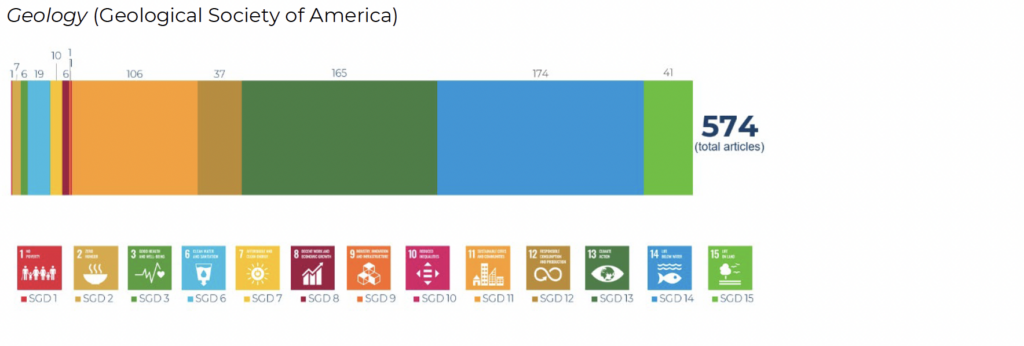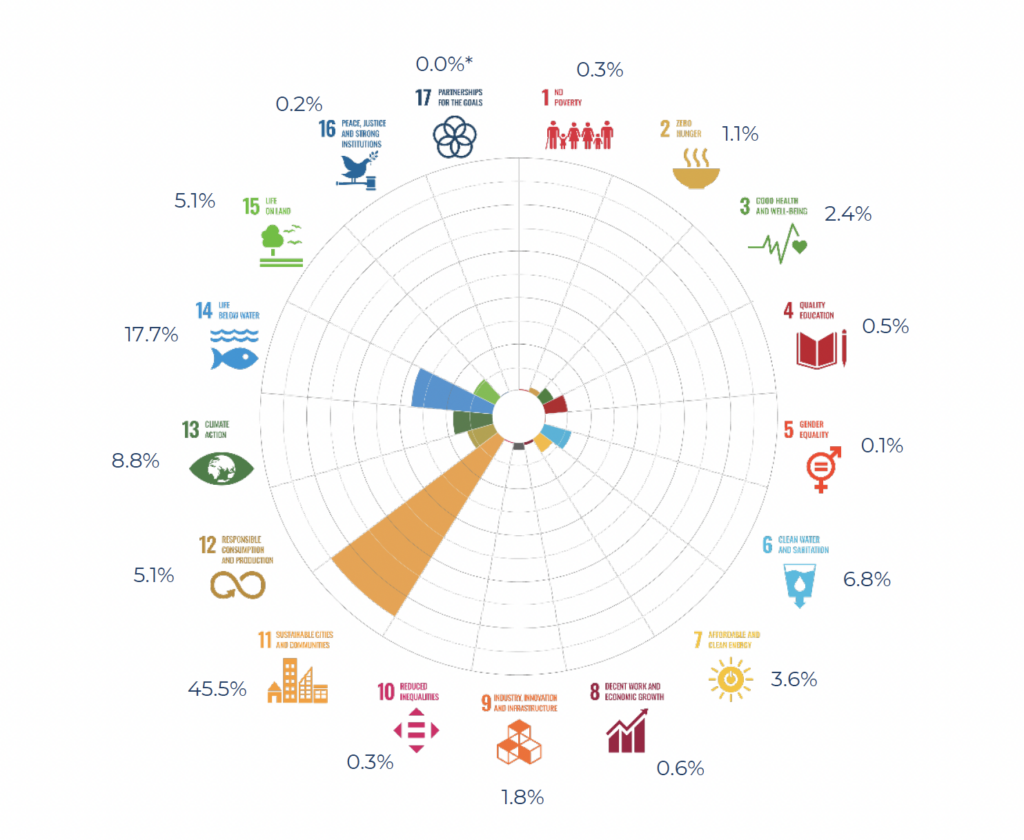It is an unfortunate irony that when we celebrate Earth Day each year, the Earth sciences are seldom top of mind for most people. Stories of scientific progress in the areas of environmentalism and sustainability abound these days, lauding everything from green chemistry to the development of better solar batteries.
But perhaps there is more that we in geology and the geosciences can do to show leadership in the pursuit of sustainability. Earth science professionals are specialists in our planet and our ecosystem, and we need to better promote our ability to tackle both today’s challenges and our future ones – not just to the general public, but to the next generation of earth scientists.
Geoscience and the Sustainable Development Goals
An important step in doing this is to show people exactly how the Earth sciences connect to those challenges. The United Nations’ 17 Sustainable Development Goals (SDGs) provide a valuable and well-known framework for illustrating these connections. The recent Geoscience in Action report, created by UNESCO and AGU (Advancing Earth and Space Science), has sought to do this for geoscientists, and has released this helpful chart dubbed the Geoscience Sustainability Clock.

Under each of the 17 SDGs are listed crucial actions that geoscientists can take to assist in the achievement of that goal, each with the dimensions of people, planet and prosperity in mind. For example, for SDG 2 (Zero Hunger), geoscience-related responsibilities are to:
- Preserve soil health
- Manage land use
- Monitor erosion
The report explores in much greater detail how the SDGs can be addressed by geoscientists – including several excellent case studies like “Geologic mapping to identify health risks” in Kentucky and “Access to water” in India – but the clock itself is a useful tool for getting us to think about how our skills and areas of expertise relate to pressing global issues around sustainability. It is not simply that Earth science professionals should be involved in sustainability efforts – it’s clear that many of these efforts absolutely require our expertise to succeed.
SDGs in geoscience research

The impact that geoscience research is having on society and sustainability goals is reflected in the literature. GeoScienceWorld (GSW) analyzed 38,000 articles published from 2012 to 2021 in 49 journals to quantify the collective contribution of the research on the UN Sustainable Development Goals.

Aggregated results for GSW corpus of research published between 2012-22.
In aggregate, the project revealed that approximately 23% of geoscience publications have some impact on 16 out of the 17 SDGs and that SDG 11 (Sustainable Cities and Communities) enjoys the most coverage by far in geological and geoscience research, followed by Life Below Water (SDG 14), Climate Action (SDG 13), Clean Water and Sanitation (SDG 6) with little or no impact on SDG 1 (No Poverty) and SDG 16 (Peace, Justice & Strong Institutions).. While that may not be terribly surprising since the latter two issues don’t appear to have a clear relationship to geoscience at first glance, the Geoscience in Action report provides thought-provoking recommendations for those SDGs too. For example, for No Poverty, they imagine one role for geoscience to be: “Building the resilience of those in vulnerable situations to climate-related extreme events and other environmental shocks and disasters.”
Next-gen geoscientists will prioritize sustainability
To step back and look at the bigger picture is a critical exercise for everyone in the geosciences now. Problems from environmental degradation and climate change to poverty and lack of clean water and reliable sustainable energy sources are complex and demand that scientists from different disciplines around the world be prepared to work together. The SDGs are one powerful way of helping us to all think about interconnected issues.
Connecting and communicating the impact of geoscience research on sustainability is important for shaping and influencing the future of the Earth sciences both in terms of next-gen geoscientists, acceleration of scientific innovation and discoveries in understanding our planet and beyond. The American Geosciences Institute has reported that enrollment in geoscience programs has been down in recent years, so we need to make the case to students that this is an exciting and vital area of study. Fully understanding the earth’s processes that are at work today helps us make sense of the past and perhaps more importantly enables us to make accurate predictions about the future. Environmental issues and environmental change are on the minds of many young people, and we may be able to inspire a new wave of young talent by showing them that a career in geoscience can empower them to become a part of the solution.
Digging into the Research
Below is a small selection of articles that are available on the GeoScienceWorld platform and demonstrate the vast research topics and geologic disciplines within the broader field of geology and sustainability. The Geological Society of America, the Geological Society of London, and the Mineralogical Society of America have made the following content free to access for the week.
Sylvain Thibeau, Frank Adler. “Pressure-derived storage efficiency for open saline aquifer CO2 storage.” Geoenergy (2023) 1 (1).
Konstantinovskaya, Elena, et al. “3D reservoir simulation of CO2 injection in a deep saline aquifer of the Lower Paleozoic Potsdam Sandstone of the St Lawrence Platform, Gentilly Block, Quebec.” Geoenergy, (2023) 1 (1).
Stephenson, Michael H., et al. “The need for joined-up thinking in critical raw materials research.” Geoenergy, (2023) 1 (1).
Walls, D. B., et al. “Combining ground stability investigation with exploratory drilling for mine water geothermal energy development. Lessons from exploration and monitoring.” Scottish Journal of Geology, (2023) 59. (1).
Stewart, E.M., et al. “Carbonation and decarbonation reactions: Implications for planetary habitability.” American Mineralogist, (2019) 104 (10): 1369-1380.
Hang, Yu-Chun, et al. “Emplacement history of volcaniclastic turbidites around the central Azores volcanic islands: Frequencies of slope landslides and eruptions.” Geosphere, (2023).
Lusty, Paul A. J., Bramley J. Murton. “Deep-Ocean Mineral Deposits: Metal Resources and Windows into Earth Processes.” Elements (2018) 14 (5): 301–306.
Donda, Federica, et al. “Influence of the evolution of the East Antarctic Ice Sheet on the continental slope and rise sedimentary record: Insights from the Sabrina Coast, East Antarctica.” GSA Bulletin, (2023) 135, (3-4).
Marder, Eyal, and Sean F. Gallen. “Climate control on the relationship between erosion rate and fluvial topography.” Geology, (2023) 51 (2).
Bruck, Benjamin T., et al. “Astronomical and tectonic influences on climate and deposition revealed through radioisotopic geochronology and Bayesian age-n, (2023) 135 (3-4).
Cao, Yong, et al. “Paleomagnetism and geochronology of Early Cretaceous volcanic rocks in the eastern segment of the Lhasa terrane, Tibetan Plateau, and their tectonic implications.” GSA Bulletin (2023) 135 (3-4).
Zhao, Fang, et al. “Large-scale igneous intrusion emplacement as a trigger for fluid seepage on the northern South China Sea margin.” GSA Bulletin, (2023) 135, (3-4).
